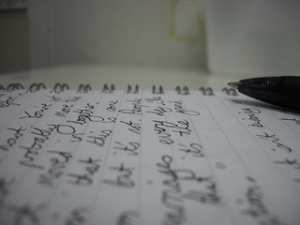
Whenever you write, it is advisable to vary your sentence structures in order to keep your readers’ interest. In this post, I’ll show you an easy way to do this using relative clauses.
Relative clauses work by adding more information to a sentence. This also means that you can often edit two or three sentences and produce one longer, more complex sentence. This method, which is useful for ordinary writing, is also useful for standardised tests such as IELTS and TOEFL.
The method
Write the information you need to give.
My morning commute is terrible. The train is crowded. I always feel stressed out.
Next, you need to organise your sentences so similar ideas are closer together.
My morning commute is terrible. I always feel stressed out. The train is crowded.
After that, edit your sentences together using ‘which’ for things, ‘who’ for people, ‘when’ for times and ‘where’ for places. You can use ‘that’ for essential information and ‘which’, ‘who’, ‘when’ and ‘where’ to give non-essential information. The non-essential information clause is surrounded by commas.
My morning commute, which is terrible,
. Ialways makes me feel stressed out. Tbecause the train is crowded.
The British Council has an article about relative clauses that can give you more information.

Minsun Kim
The word order of Korean, as far as I Know it’s similar to Japanese’s, is different from that of English. so sometimes I’m confused how to speak and write English 🙁 I’ll solve the problems in a calm and orderly way by using useful tips you teach me 🙂 thank you sir TGIF!!
Marc
I believe you are right. English word order is *usually* subject-verb-object (“I study English”) and Japanese and Korean have subject-object-verb word order (“I English study”). It’s difficult but not impossible!
Siarhei
Thanks
Could you please give bit more examples
Marc
Sure, Siarhei.
1. The weather caused problems for residents. They had to leave their homes because the rain led to flooding.
-> The rain, which led to flooding, caused problems for the residents who had to leave their homes.
2. Munich Airport is a travel hub for Europe. Over 3 million air passengers depart from, arrive at or transit through it every year.
-> Munich Airport is a travel hub for Europe that is departed from, arrived at or transited through by over 3 million air passengers every year.
Siarhei
Thanks, Marc